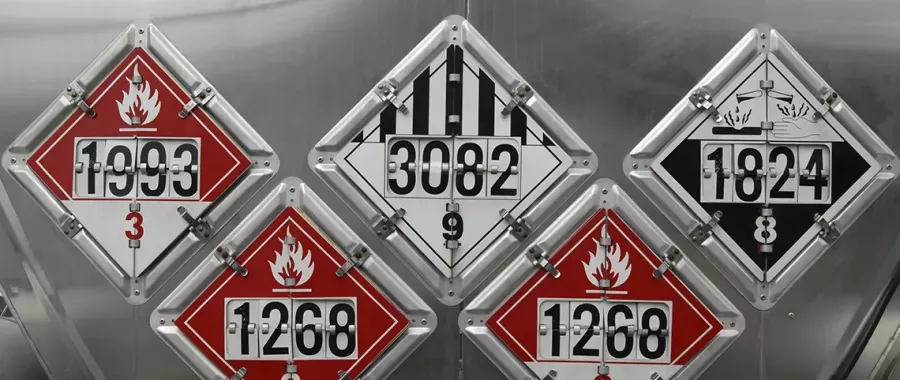From 17 January 2020, the fourth edition of the HSE’s guidance document ‘EH40/2005 Workplace Exposure Limits’ came into force, introducing new and revised workplace exposure limits for 13 carcinogenic substances.
For organisations operating in industries that use or generate hazardous substances, understanding the new workplace exposure limits is fundamental to ensuring appropriate changes can be put into place to improve regulation compliance and safeguard the health and safety of employees.
To support your organisation’s understanding of the EH40 updates, SOCOTEC has provided an overview of the changes and how they may affect your organisation moving forward.
Update to EH40/2005 Workplace Exposure Limits Guidance
What are Workplace Exposure Limits?
Workplace exposure limits (WELs) outline the highest acceptable concentration of an airborne hazardous substance in the workplace.
When managing activities that use or generate hazardous substances and conducting risk assessments, WELs can support organisations in their duty to monitor exposure to hazardous substances, where required, under the Control of Substances Hazardous to Health (COSHH) Regulations 2012.
Exposure monitoring via personal air sampling may be required to determine whether or not exposure levels are acceptable.
What are the new and revised EH40 workplace exposure limits (WELs)?
13 substances listed in the European Commission’s Directive (EU) 2017/2398 have been added or revised in the EH40/2005 Workplace Exposure Limits guidance document. These have been implemented in order to comply with the Carcinogens and Mutagens Directive (EU) 2017/2398 amending Directive (2004/37/EC) and are as follows:
- Hardwood dusts (including mixed dusts)
- Chromium (VI) compounds
- Refractory ceramic fibres
- Respirable crystalline silica
- Vinyl chloride monomer
- Ethylene oxide
- 1,2-Epoxypropane
- Acrylamide
- 2-Nitropropane
- O-Toluidine
- 1,3-Butadiene
- Hydrazine
- Bromoethylene
Reductions to the existing WELs have been made for the following substances:
- Hardwood dusts
- Chromium (VI) compounds
- Refractory ceramic fibres
- Vinyl chloride monomer
- Ethylene oxide
- 1,2-Epoxypropane
- Acrylamide
- 2-Nitropropane
- O-Toluidine
- 1,3-Butadiene
- Hydrazine
Skin notations have also been added for ethylene oxide.
When do the EH40 changes come into effect?
The changes to EH40 became effective as of 17 January 2020, requiring immediate response and appropriate action in order for organisations to be compliant with regulations and ensure the wellbeing of employees.
Why have the changes been made?
The EU sets limits for exposure to harmful chemicals in the workplace using Indicative Occupational Exposure Limits (IOELVs), which member states are required to implement with national exposure limits. In January 2018, the EU adopted a directive regarding workplace exposure to substances identified as either carcinogenic or mutagenic (capable of causing permanent change in an organism’s genes). Accordingly, a series of amendments have been made to the Carcinogens and Mutagens Directive (2004/37/EC), which introduces and/or revises a number of binding WELs and carcinogenic substances. While Britain has now officially left the EU, the UK must still comply with these new WELs until directed otherwise.
What do I need to do about the EH40 update?
Understanding the new and revised limits is important, as it requires employers to assess the extent to which these changes will affect their organisation and their employees. If a substance has been added or amended and your industry puts workers at risk of exposure to hazardous substances, your organisation may need to undertake workplace exposure monitoring to assess if there is adequate control of exposure. This is usually done by fitting the employees expected to be at risk with personal air sampling equipment. If your workplace exposure monitoring demonstrates that exposure is inadequate and does not comply with the WEL, recommendations can be made on how to reduce the level of risk.
There are a number of notable changes to WELs that will require organisations to act imminently and ensure that their monitoring shows exposure levels that are below the new limits. For most of these substances, organisations will not face significant costs in complying with the new limits. However, hardwood dust and chromium have the potential for higher costs to be involved in complying with the new law. In line with COSHH, these amendments require exposure to carcinogenic substances to be reduced to ‘as low as is reasonably practicable’. Extended transitionary periods are included in the directive for these (January 2023 Hardwood Dust and Chromium VI) to allow time for the industry to phase improvements in controls and working practices to achieve compliance.
While the WEL for Respirable Crystalline Silica will remain at 0.1mg / m3, it will now be classified as carcinogenic for the first time, meaning it is now deemed capable of causing cancer and/or heritable genetic damage. The WEL for hardwood dusts will change from 5mg / m3 to 3mg / m3; this will be reduced further in 2023, when the new limit will be 2mg / m3. It should also be noted that this new WEL will apply to all species of wood if hardwood dusts are present within the mixture. Finally, the WEL for chromium compounds will reduce from 0.05mg / m3 to 0.010mg / m3 (non-process generated) and 0.025mg / m3 (process generated)*. This will reduce once again in January 2025 to 0.0005mg / m3.
*The term ‘process generated’ refers to exposure to chromium compounds generated as a result of work processes.
How can SOCOTEC help?
Compliance can be made easy and understandable with the help of SOCOTEC’s occupational hygienists. The organisation has an expert team qualified to advise on regulatory requirements, develop monitoring strategies, undertake workplace exposure monitoring and local exhaust ventilation testing, as well as guide companies to meet their statutory duties. All of SOCOTEC’s occupational hygienists have extensive experience in exposure monitoring of carcinogenic substances for a wide range of clients based in rail and transport, mining, logistics, construction and manufacturing.
For more information about SOCOTEC's occupational hygiene services or contact us.
Read SOCOTEC’s Occupational Exposure Limits blog here.



